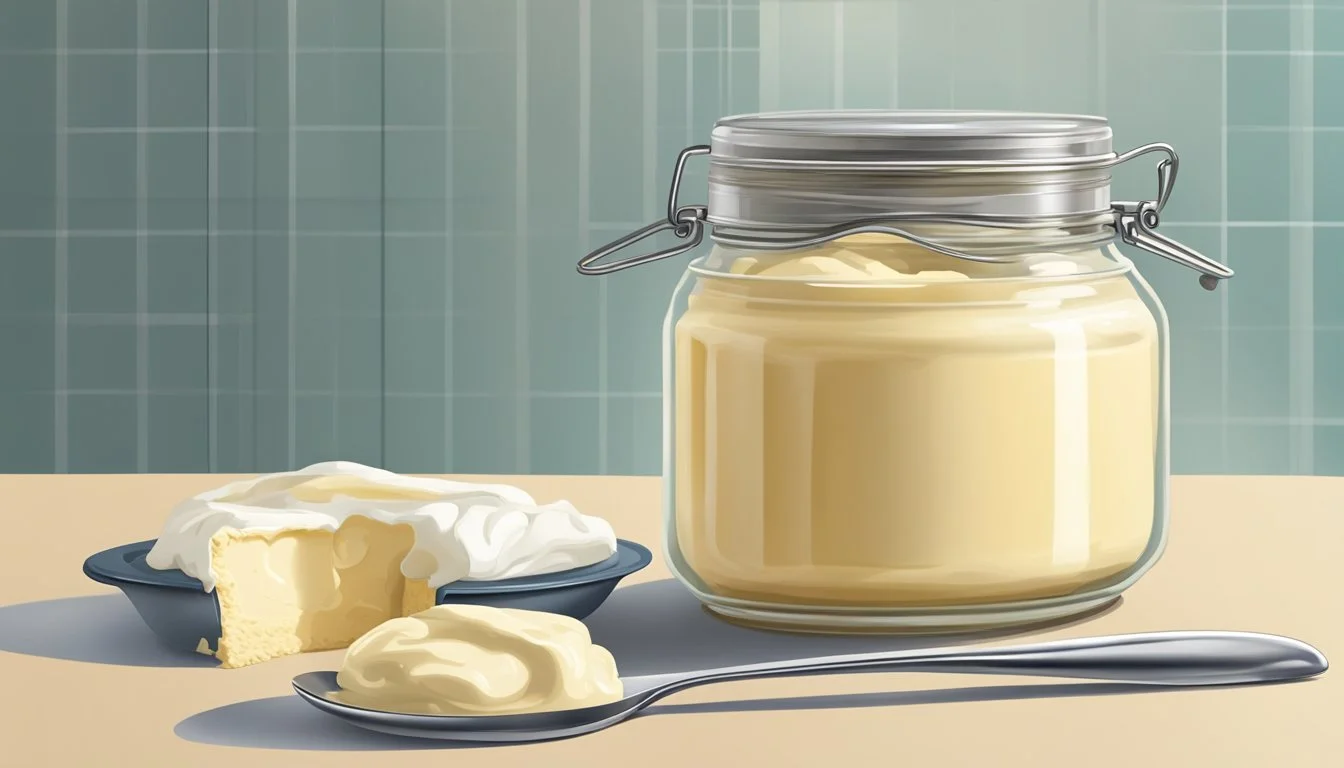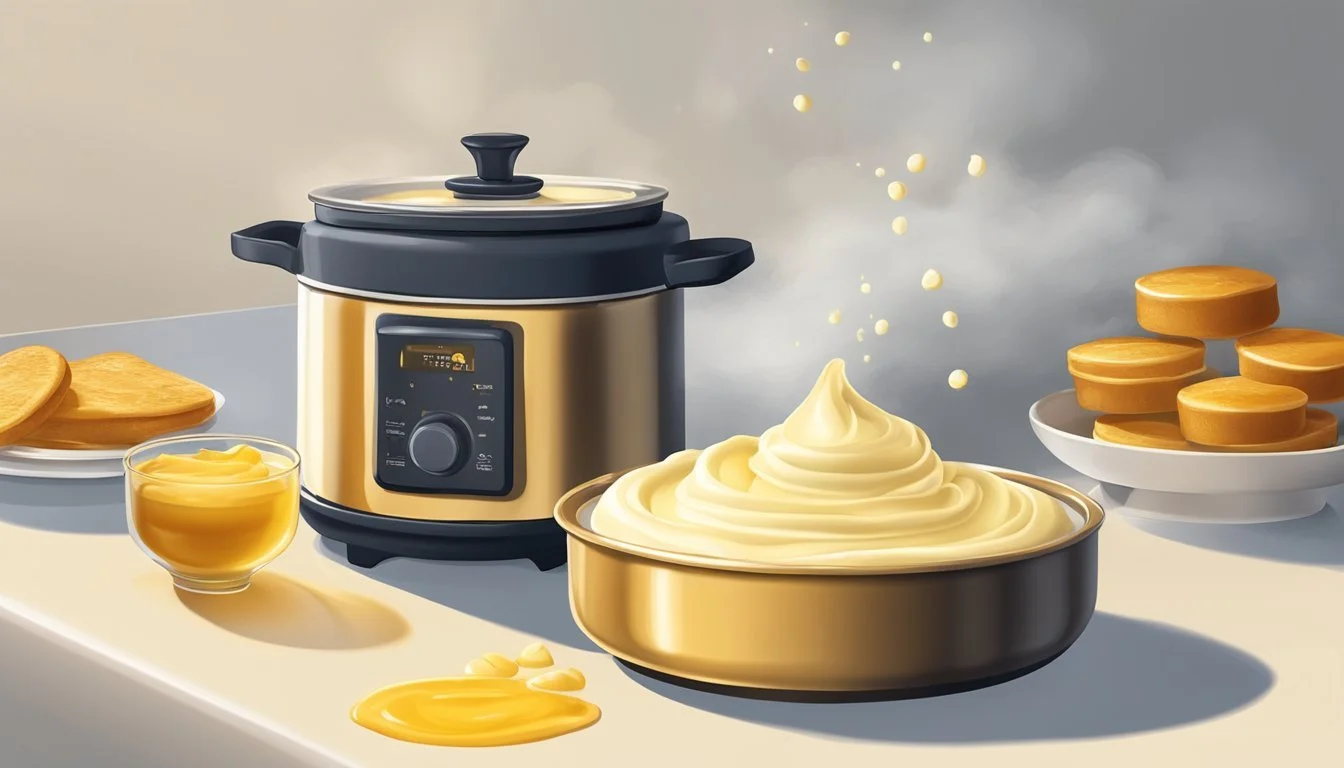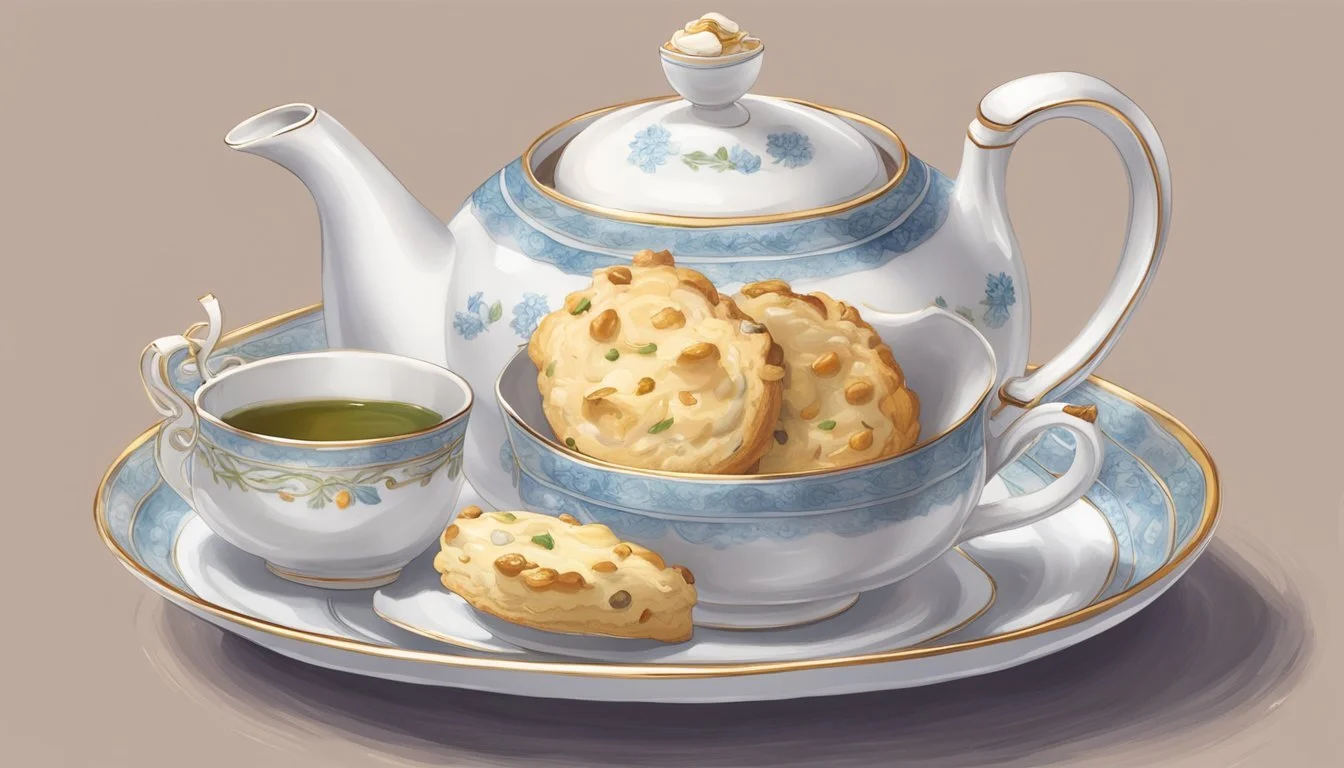Does Clotted Cream Go Bad?
Understanding Shelf Life and Storage
When it comes to clotted cream, a staple in British culinary traditions, many wonder about its shelf life and storage needs. Clotted cream, a thick, rich dairy product often associated with afternoon tea and scones, has a distinct preparation method that involves heating cream until it 'clots' or thickens. This luxurious topping heralds from Devon and Cornwall, regions in England known for their dairy products.
Yes, clotted cream does go bad. Like other dairy products, clotted cream must be properly stored to maintain its freshness. Typically, it has a chilled shelf life of around 19 days if stored in the refrigerator. Once thawed, its shelf life drops to approximately 17 days. It's recommended to consume it sooner given the variability in storage and transport conditions.
Proper storage is key to prolonging its life. Always refrigerate clotted cream and keep an eye on the date to ensure it's consumed while still fresh. This ensures that your teatime treats in Devon or Cornwall, or anywhere else, are as delightful as they are meant to be.
Understanding Clotted Cream
Clotted cream, a rich and decadent dairy product, has its origins in Devon and Cornwall. It is created by heating full-cream cow's milk slowly and then allowing it to cool. During this process, the cream rises to the surface and forms "clots," giving it its distinctive name.
Texture and Taste
Clotted cream is known for its thick, dense texture and a golden crust on top. It has a rich, slightly sweet taste that pairs perfectly with scones and jam. The consistency is somewhere between butter and whipped cream, making it a unique addition to various dishes.
Fat Content
One of the key characteristics of clotted cream is its high butterfat content, which is around 55%. This high fat content contributes to its luxurious texture and taste.
Uses
Often referred to as Devonshire or Cornish cream, it is traditionally served during afternoon tea with scones. Unlike heavy cream, clotted cream is not suitable for whipping due to its dense nature. It can also complement desserts or be used in various culinary applications where a rich, creamy flavor is desired.
Production Process
Heat milk or cream in a shallow pan to around 90°F.
Maintain the temperature for several hours to allow the cream to rise.
Increase heat slowly to 180-200°F and hold for about an hour.
Cool overnight, then skim the thick cream from the surface.
This traditional method results in a product that’s both delicious and versatile.
Production and Types
Clotted cream, with its rich texture and high butterfat content, is produced using traditional and modern methods, each impacting its flavor and quality. Variations and regional differences add distinct characteristics enhancing its uniqueness.
Traditional Methods
Traditional production of clotted cream primarily uses full-cream cow's milk. The process typically involves heating the milk in shallow pans, often using steam or a water bath.
Once heated, the milk is left to slowly cool. During cooling, the cream rises to the surface, forming a thick layer of "clots" or "clouts."
In Devon and Cornwall, these methods have been preserved for generations, lending authenticity to Devonshire and Cornish clotted cream. The high-fat content of up to 55% is achieved naturally without preservatives or additives.
Commercial Variants
Commercial clotted cream production streamlines the traditional process for scale. Manufacturers often use industrial ovens and controlled environments to speed up heating and cooling, ensuring consistency in texture and flavor.
Labels on commercial products sometimes include additional ingredients for longer shelf life, such as stabilizers and preservatives. Despite these additions, the butterfat concentration remains high, ensuring the spreadable and rich quality that defines clotted cream.
In the United States, commercially available clotted cream often undergoes pasteurization to meet food safety regulations, altering its taste slightly compared to its traditional English counterpart.
Regional Differences
The characteristics of clotted cream vary significantly by region. Cornish clotted cream is protected under the European Union's Protected Designation of Origin (PDO), meaning it must be produced in Cornwall with local milk to bear the name.
Devonshire cream, another renowned variety, shares similarities but differs in flavor and texture due to small differences in the traditional methods and specific regional milk qualities.
These regional variants emphasize the importance of local practices and ingredients in producing authentic clotted cream, each contributing to the cream’s distinctiveness and cultural heritage in England.
Storage Guidelines
Proper storage of clotted cream is essential to maintain its quality and shelf life. Key considerations include refrigeration practices and freezing methods for extended storage.
Optimal Refrigeration
Clotted cream should be kept in the refrigerator at a consistent temperature between 32°F (0°C) and 40°F (4°C). Unopened clotted cream can last up to its use-by date if stored properly. Once opened, it should be consumed within 3 to 5 days to enjoy the best quality and taste.
Using airtight containers helps retain the freshness by preventing exposure to air, moisture, and contaminants. Always check for signs of spoilage, such as an off smell or discoloration, before using clotted cream. Proper refrigeration ensures its longevity and maintains the desired texture and flavor.
Freezing and Thawing
While it's not ideal, you can freeze clotted cream if necessary. To freeze clotted cream, store it in an airtight container to avoid the formation of ice crystals, which can alter the texture. The frozen clotted cream should be consumed within 3 months for the best quality.
To thaw, transfer the cream to the refrigerator and allow it to defrost slowly. Rapid thawing can lead to separation and changes in texture. Do not refreeze clotted cream once it has been defrosted, as this can further degrade its quality. If significant changes in texture occur, it may be better suited for cooking or baking rather than direct consumption.
Spoilage Indicators
Clotted cream, like other dairy products, can go bad. Recognizing spoilage indicators is crucial for food safety.
Visual Changes:
Mold growth: Any presence of black, green, or blue mold on the cream is a clear sign of spoilage.
Discoloration: Fresh clotted cream should be pale yellow. If the cream turns a darker yellow or develops brown spots, it is likely spoiled.
Texture Changes:
Curdling or separation: Clotted cream should have a smooth and thick consistency. If it appears curdled or watery, it has likely gone bad.
Smell:
Foul odor: Clotted cream should have a rich, slightly sweet scent. An off, sour, or rancid smell indicates bacterial activity and spoilage.
Taste:
Sour taste: Fresh clotted cream is mildly sweet. Any sour or tangy flavor is an indication that the cream has spoiled and should not be consumed.
Container Condition:
Bloating or swelling: If the container of clotted cream is bloated or swollen, it suggests gas production by bacteria, indicating spoilage.
It's important to store clotted cream properly. Keep it refrigerated and tightly sealed. Avoid storing in the refrigerator door, as it is subject to temperature fluctuations. Always use pasteurized milk to reduce the risk of harmful bacteria.
Monitoring these indicators helps ensure clotted cream is safe to consume, maintaining both quality and food safety.
Health and Nutrition
Clotted cream is a dairy product rich in butterfat, containing about 55% to 60% fat. Most of this fat is saturated, which is a consideration for those monitoring their intake of saturated fats.
An ounce of clotted cream typically provides around 145 to 157 calories, making it a calorie-dense food. This should be taken into account, especially if consuming large quantities.
Alongside its high-fat content, clotted cream also contains some vitamins from milk, such as vitamins A and D. These contribute to its nutritional value but require mindful consumption to balance other dietary needs.
Here is a quick overview of the nutritional content per ounce:
Nutrient Amount Fat 15.6 - 17g Calories 145 - 157 Carbohydrates ~4g
While clotted cream is typically enjoyed in small portions, its rich and creamy texture means it provides a decadent addition to desserts like scones. It's best enjoyed in moderation to avoid excessive intake of saturated fats and calories.
For individuals with lactose intolerance or dairy allergies, clotted cream should be avoided as it is a dairy product made from cream.
Culinary Uses
Clotted cream is a versatile ingredient cherished in various culinary applications. Its thick, creamy texture and mildly sweet flavor enhance both traditional pairings and creative alternative uses.
Traditional Pairings
Clotted cream is a staple in afternoon tea settings, frequently served with scones. Scones topped with clotted cream and jam create an iconic British treat.
Strawberries also pair excellently with clotted cream, contributing to a classic summer dessert. The combination of fresh berries and the cream's rich texture makes for a delightful contrast.
Many recipes emphasize these traditional pairings to maintain the dish's authenticity and highlight the cream's unique taste. Its role in baking includes enhancements such as fudge and muffins, where clotted cream provides an added layer of richness.
Alternative Uses
Beyond traditional pairings, clotted cream finds a place in various culinary creations. It can be used as a lavish topping for fruit tarts, adding a lush, creamy element that balances the tartness of the fruits. Additionally, it pairs wonderfully with other types of sweet and savory quick bread as a luxurious spread.
In desserts, clotted cream can be incorporated into recipes for meringues and caramel sauce, adding depth to these sweets. Some chefs use it in creating clotted cream truffles, making for a decadent treat. These alternative uses showcase its versatility, making it a valuable ingredient for both traditional and innovative dishes.
Comparison with Other Creams
Understanding how clotted cream differs from other types of cream can help in selecting the right product for various culinary uses. This section provides a detailed comparison with whipped cream, mascarpone, crème fraiche, and soft cream cheese.
Whipped Cream and Mascarpone
Whipped Cream:
Whipped cream is lighter and fluffier than clotted cream. It has a fat content of 30%-40%, making it less rich. The whipping process incorporates air, giving it a soft, airy texture ideal for desserts and beverages. Whipped cream is often sweetened, making it distinctly different in both taste and use when compared to clotted cream.
Mascarpone:
Mascarpone is an Italian cream cheese with a rich, buttery flavor. While it shares clotted cream's richness, its texture is smoother and more spreadable. Mascarpone has a similar fat content but is used more in savory dishes and desserts like tiramisu. Unlike clotted cream, it does not undergo the heating process that imparts a nutty flavor.
Creme Fraiche and Soft Cream Cheese
Crème Fraiche:
Crème fraiche is a cultured cream that is tangy and less rich than clotted cream. It has a smooth, velvety texture and can be used in hot dishes without curdling. Its fat content is lower at around 30%, and it imparts a mild, slightly sour taste, making it suitable for both savory and sweet recipes.
Soft Cream Cheese:
Soft cream cheese, often used as a spread, is different in texture and flavor. It is smoother and more tangy, lacking the nutty, buttery notes of clotted cream. Its fat content is around 33%, and it is commonly used in baking and as a topping. Soft cream cheese is more versatile and can be easily incorporated into both savory and sweet dishes.
Making Clotted Cream at Home
Creating clotted cream at home is straightforward and rewarding. Start with heavy cream from fresh cow's milk, ideally with a high fat content of 36%-40%. This rich cream yields the best results.
Pour the cream into a shallow, oven-safe dish until it’s about 1-2 inches deep. Preheat the oven to 175-180°F (80-82°C).
Leave the cream in the oven, unbothered, for 12 hours. This lengthy heat exposure will develop a golden crust on top.
Once the baking is complete, let the dish cool to room temperature. Then, cover and refrigerate for at least 8 hours or overnight.
After chilling, gently skim the thickened clotted cream from the surface, leaving the liquid behind. Store this clotted cream in an airtight container in the refrigerator. It remains fresh for up to 1 week.
Tips:
Use cream from grass-fed cows for better flavor.
Avoid stirring the cream during the baking process.
Use a spoon to lift the clotted cream layer carefully.
Making clotted cream at home allows control over ingredients and freshness, ensuring a delicious addition to your scones or desserts.
Serving and Presentation
Clotted cream is a versatile addition to many dishes, suitable for various occasions.
Scones traditionally feature clotted cream as a key component of a cream tea or afternoon tea. Spread a generous amount of clotted cream on a freshly baked scone, often topped with a layer of jam.
For a delightful breakfast or brunch option, add a dollop of clotted cream to a bowl of fresh berries like strawberries or raspberries. It can also elevate a bowl of hot oatmeal with its rich texture and flavor.
Desserts gain an indulgent touch when served with clotted cream. Add a spoonful to a slice of apple pie or any other pie flavor. This creamy topping enhances the sweetness and complements various desserts.
A less common but delightful pairing is clotted cream with a cup of coffee. The creamy texture contrasts interestingly with the coffee's bitterness, creating a rich and satisfying drink.
Here is a quick reference table for serving ideas:
Dish Serving Suggestion Scones Topped with clotted cream and jam Berries Fresh berries with a dollop of clotted cream Hot Oatmeal A small spoonful mixed into hot oatmeal Apple Pie A generous serving on top of apple pie Coffee Add clotted cream for a rich twist
Clotted cream adds a luxurious, creamy element to both sweet and savory dishes, making it a beloved addition to any meal.











